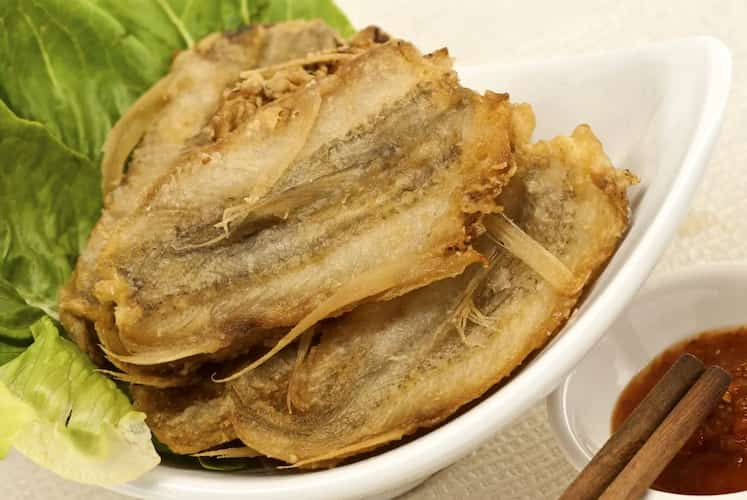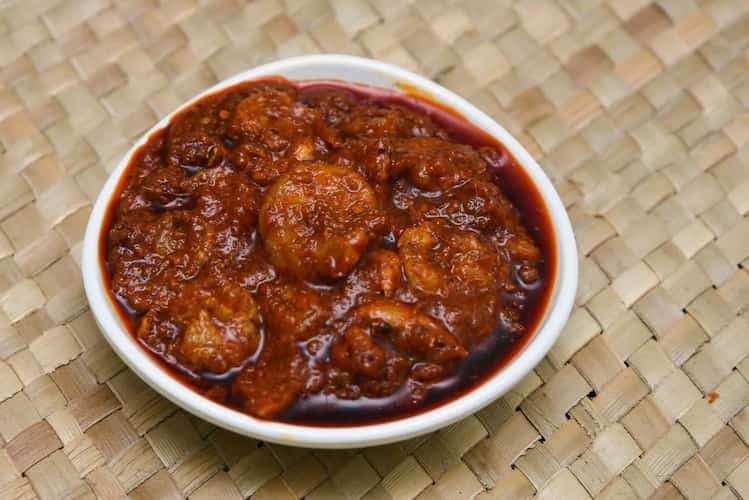Thick, dark clouds overhead. Choppy seas. Hot, humid air pregnant with anticipation. In homes across the little state of Goa, women hold their rosaries close as prayers are faithfully raised to the heavens for a good monsoon season.
And then it arrives. Rain lashing the shores, filling the rivers, drenching miles upon miles of lush green paddy fields, raising the spirits of every Goenkar. It is the months leading up to the monsoons that, in fact, decide what Goa eats during the rainy season. Goa's local communities start to get ready for the season, with preparations beginning as early as October, soon after one monsoon season closes. Twigs, wood, and coconut shell are collected and carried back home to use as firewood when the rains hit. The sap of the coconut palm is fermented for months to create potent toddy vinegar, a mainstay ingredient of Goan cuisine.
The practice of ‘Purument’
A whole feast is dedicated to stocking up on provisions for the monsoons. The Purumentachem Fest takes place before the monsoon season and marks the end of summer. The name is a derivative of the Portuguese 'provimento,' meaning provisions, and is also known as the Feast of the Pentecost. This Christian feast day commemorates the Holy Spirit's descent upon the apostles.

Celebrated in Margao around the end of May, the Purumentachem fair lasts approximately a week. It's a period when farmers and home cooks display and sell essential items like pickles and preserves that the locals will need for the rain-filled months ahead.
The Goan monsoon kitchen
While the thought of dark skies and blinding, torrential rain for days and weeks on end might sound gloomy, the Goan monsoon kitchen is anything but! The food-loving Goan incorporates a medley of salty, sour, sweet, and fiery flavours into monsoon cuisine, and stocking up is a celebration in itself.

Seafood-loving goans cannot imagine a day without their xit kodi (fish curry rice), and having to survive an entire monsoon season without any fish would be pitiful. Due to the fishing ban and overall scarcity of fish during the monsoons, Goans ready their kitchens for the months ahead, storing dry fish like Bombay duck, kite-fish, shellfish, and prawns. Other items bought and sun-dried items include sea salt and pulses like vosane (beans) and meerulio (small white beans).
Raw mangoes are sliced with skin, salted, and dried in the sun to make ambya sol, an integral souring agent that lends a depth of flavour to Konkani curries. It is also used for making pickle and chutney. Kokum, another popular souring agent, is dried similarly, though without being cut into pieces.
The Portuguese brought chillies to India; since then, chillies have been an indispensable part of Goan cuisine. Using the right chillies is integral to achieving the perfect balance of flavours required for a good Goan curry. From the Canacona chilly, popular in the south of Goa, to the dark reddish-black Mosurio or butao chillies of Moira in the North and of course the Kashmiri chillies, you will see sacks full of them dotting the lanes of Mapusa market, as locals pick them up, readying their monsoon kitchens.
Monsoon preparations are incomplete without the signature choris or goa sausages the state is so famous for. On hot, languid summer days of May, womenfolk busy themselves massaging a fiery red masala concoction called recheiad into chopped chunks of pork and fat. The meat is then nimbly stuffed into casings made of pig intestine and tied in a manner that bears a resemblance to rosary beads, lending it the name 'rosary sausages.'
Members of several neighbouring houses might come together to perform the summer ritual, and plenty of gossip and yarn-spinning is synonymous with the occasion. Taking advantage of the scorching heat, the sausages are hung to dry outside. You know the sausages are well dried when they acquire a visibly crinkled texture.
Rainy day delights
Choris pao
On a rainy day, nothing comes close to the sheer bliss of sinking your teeth into soft, mildly sweet poee and experiencing a sensory awakening with the hot, tangy, and fiery choris stuffing inside. Choris is sauteéd with sliced onions to make a pork chilly fry filling, and most locals will attest that choris pao is one of their favourite monsoon snacks.
Kismur
A refreshing salad made from lightly toasted dried prawns and coconut, Kismur is typically eaten as an accompaniment with sorak or vegetable curry during the monsoons.
Para, molho and balchao

The heady aroma of para being roasted adds to all the monsoon feels. Para is a pickle made with sun-dried fish such as mackerel or Bombay duck, marinated in a paste of bydagi chillies and vinegar. The pickle is traditionally stored in earthen pots for a month or more. It adds a zesty punch to the mid-morning kanji or pez (rice gruel) that Goans love.
Other pickles on the Goan monsoon table include balchao, made with small prawns, and molho made of fried kingfish and vinegar. Each of these can easily elevate the simplest meals.
Patoleo
15th August is celebrated as the Feast of the Assumption of Our Lady. One of the delicacies prepared on this day is a sweet called patoleo. Enjoyed as a tea-time snack, patoleo is made by smearing a rice paste on a turmeric leaf, placing a freshly grated coconut and jaggery filling in the centre, and steaming it. It has a delicate sweetness and is best enjoyed warm.
Vonn
Made with coconut milk and palm jaggery, Vonn is a nutritious monsoon dessert. The juice of a coconut is extracted, cooked with rice flour, and gram dal and palm jaggery added to it till it achieves a thick, hearty consistency. It is spiced with cardamom, garnished with dried fruits, and best enjoyed on a rainy day.


